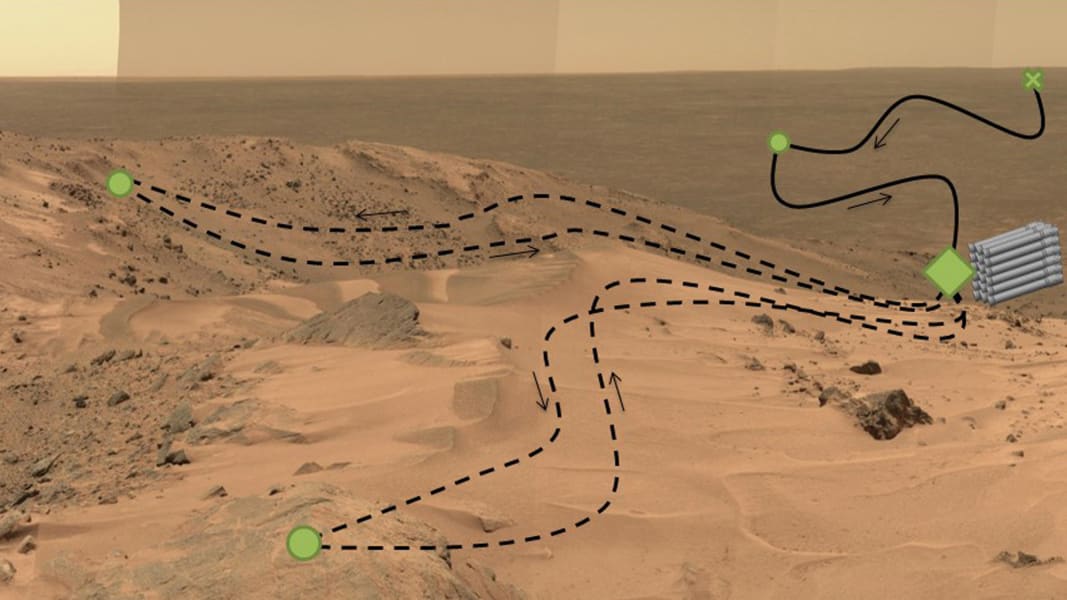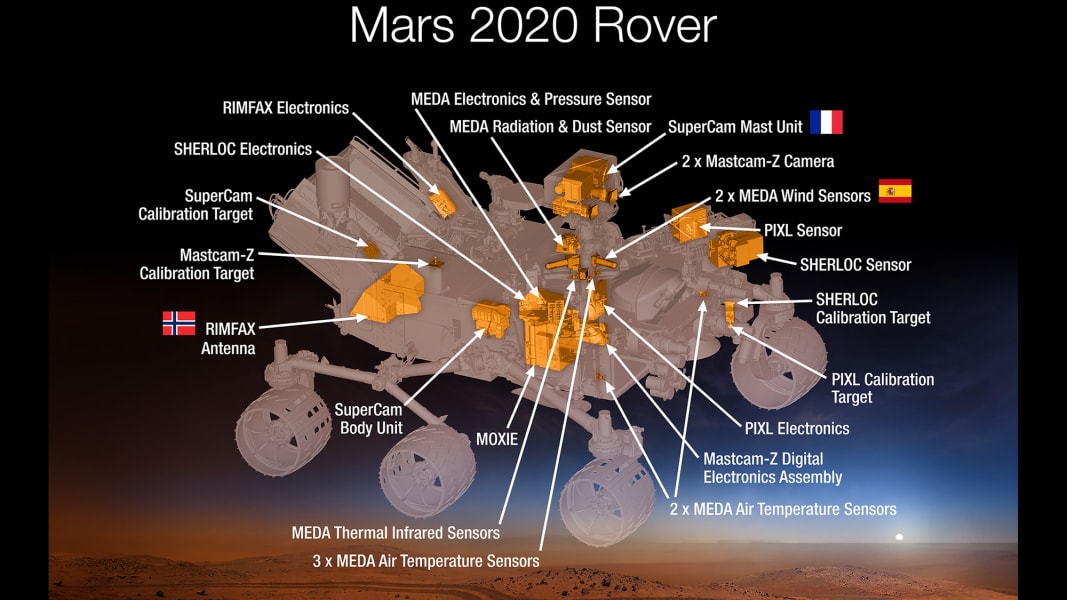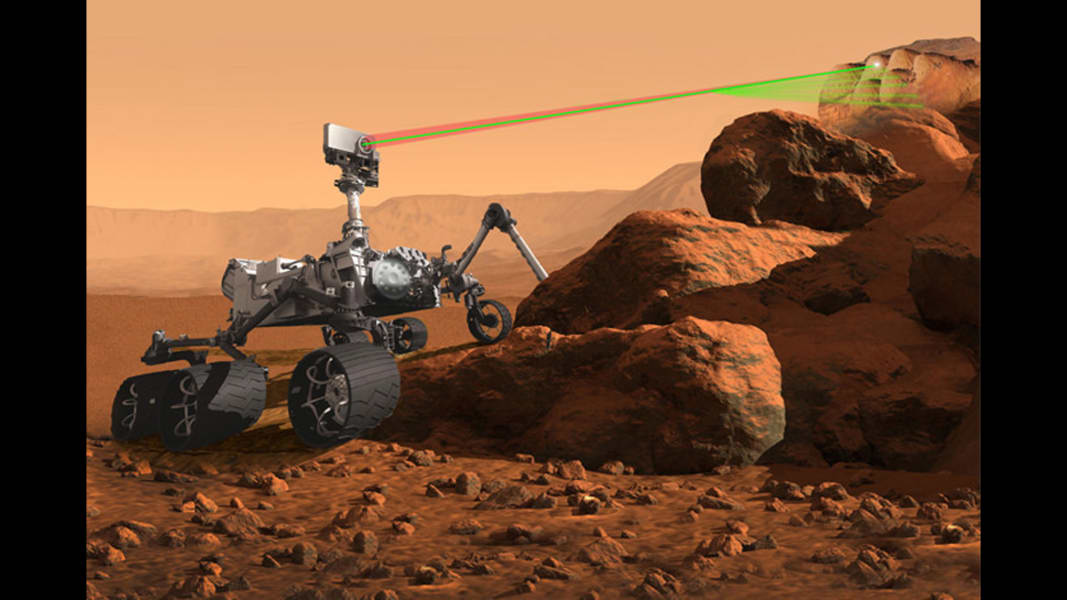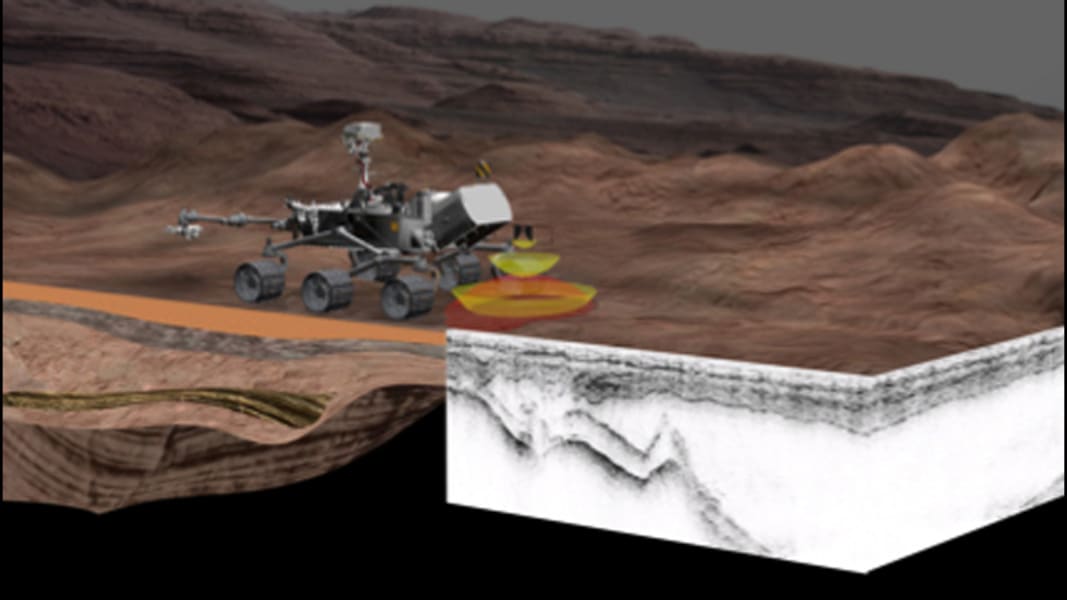Share
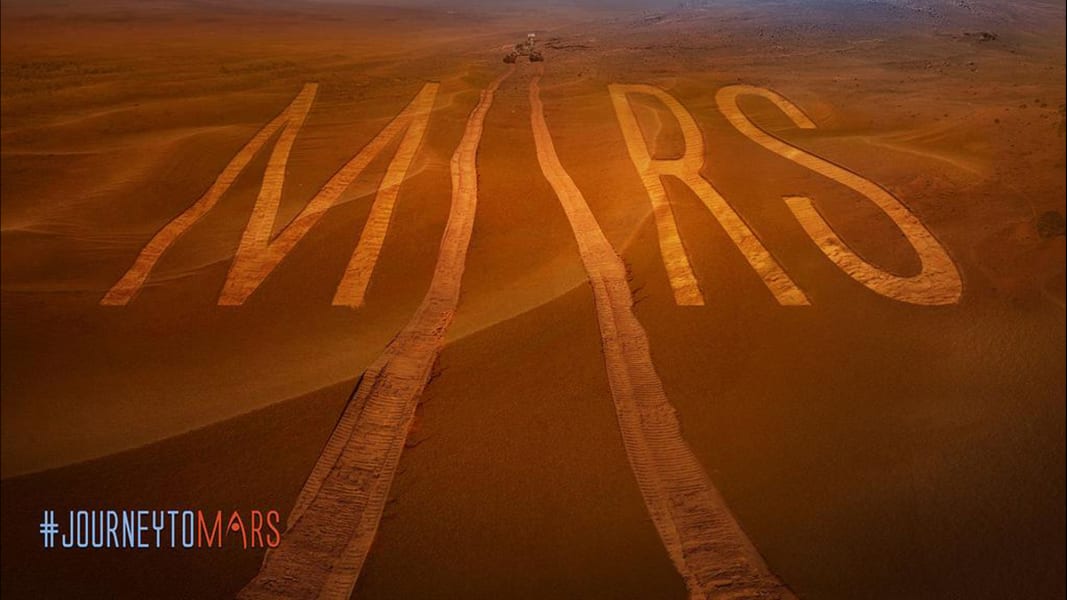

1 of 12
In 2020, NASA is sending another rover to Mars, which is expected to land in early 2021. This new rover will provide sights and sounds on the surface of the red planet. NASA
Equipped with new instruments proposed by researchers around the world, the 2020 rover can give us more details about the composition of the rocks and surface of Mars. NASA
Supercam will be able to image and analyze samples for chemical composition, mineral content and even study rocks in the distance for possible organic compounds. NASA
The Mastcam-Z, attached to the mast of the rover, will be able to zoom like a pair of binoculars and provide panoramic and stereoscopic images that allow for 3-D mapping. NASA
MEDA, which is perched on the deck of the rover, works like a weather station. It can take the temperature, humidity, wind speed and direction and analyze the dust particles in the atmosphere. NASA
MOXIE will convert the carbon dioxide in the Martian atmosphere into oxygen, which could later help astronauts who go to Mars. This might allow them to breathe, and they could also use it for propellant. NASA
PIXL is on the hunt for microbial life in the ancient past. It can identify chemical elements, see features as small as a grain of salt and take high-resolution close-up images of rocks and soil. NASA
SHERLOC will use an ultraviolet laser to search for organic molecules and the mineral makeup of any rock or surface it images. NASA
RIMFAX will use ground-penetrating radar to study what's beneath the surface of the rover, searching for rock, sand, ice or brine. It can create sonogram-like images using this data. NASA
The rover will use a drill with five bits to collect samples of rock and soil and use a method called "adaptive caching" to store them in piles on the surface for a future mission to potentially collect. The green dots represent regions of interest, the green diamond is a cache location, the green "X" is the landing site, and the black line depicts its route. NASA
The rover will use the sky crane method for landing, like the Curiosity rover. During the descent, rockets slow it down while the rover is lowered on tethers and an umbilical cord that provides communication and power. Once it has touched down, the rover will cut ties and the rest of the craft will crash land at a safe distance. NASA
The Mars Helicopter will be equipped to fly through the thin Martian atmosphere. NASA/JPL-Caltech
